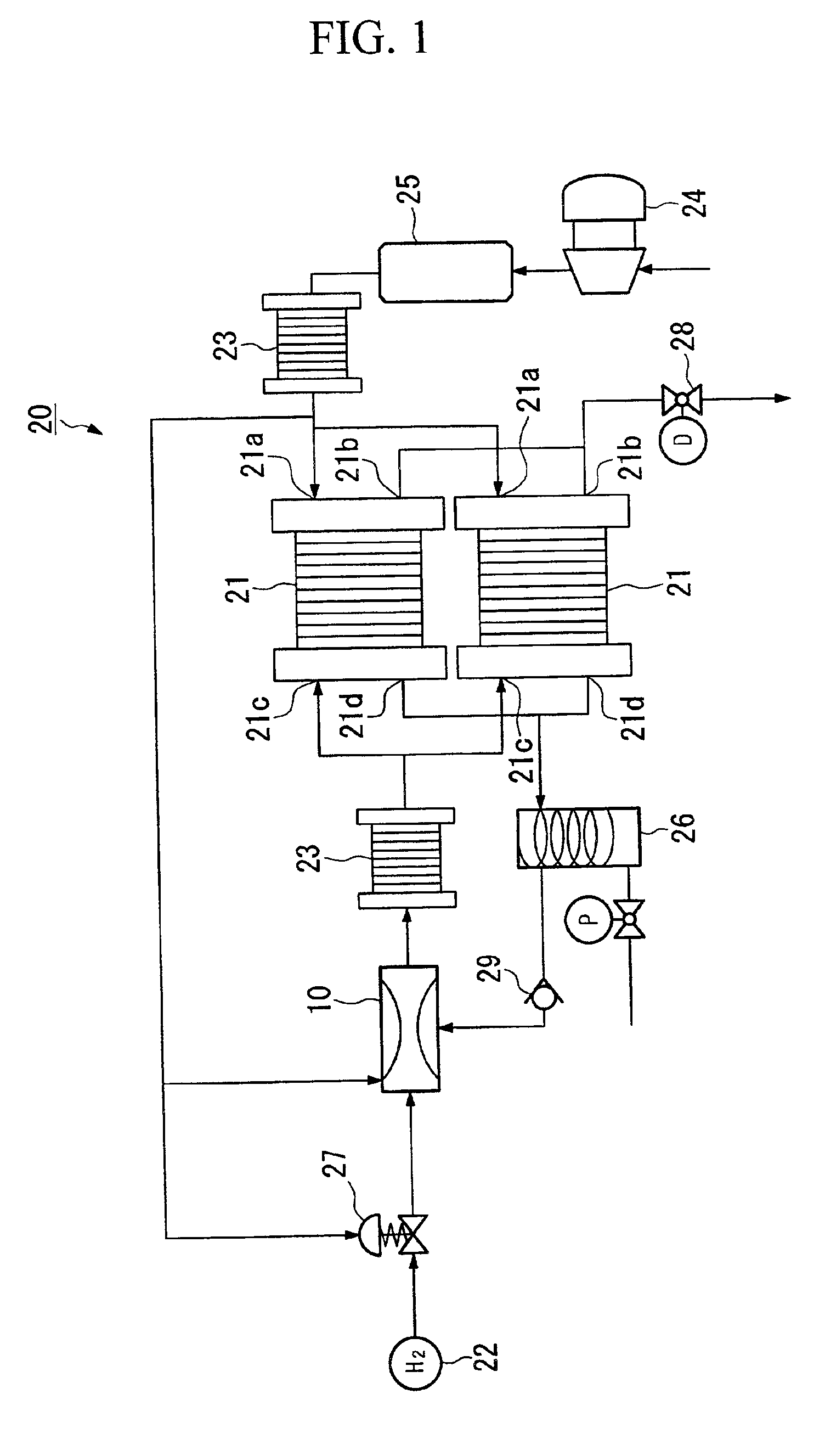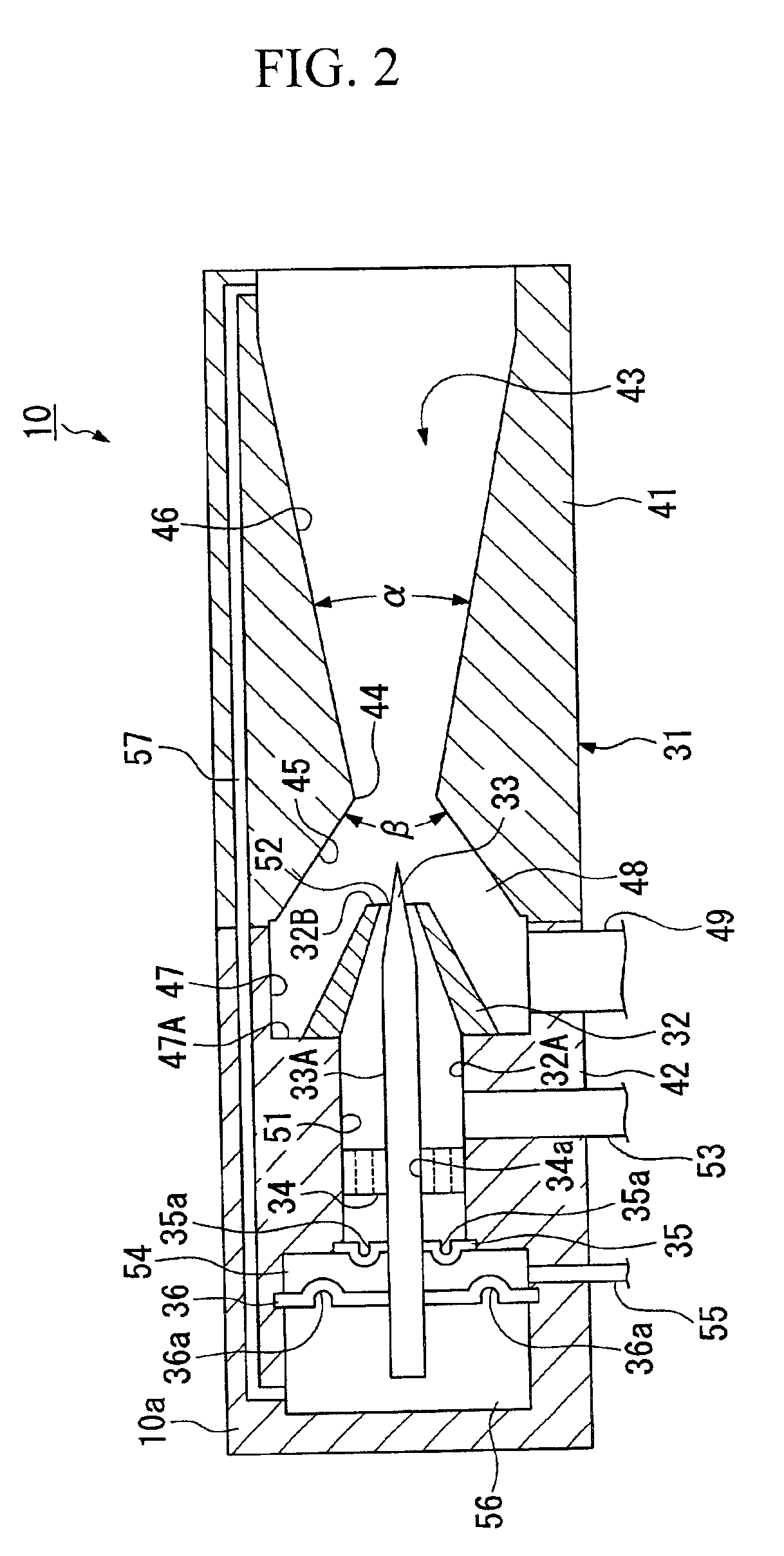Variable flow-rate ejector and fuel cell system having the same
a technology of flow-rate ejector and fuel cell system, which is applied in the direction of machine/engine, cell component details, cell components, etc., can solve the problems of increased cost, complex structure and control of fuel cell system, and inability to accurately control the actuator
- Summary
- Abstract
- Description
- Claims
- Application Information
AI Technical Summary
Benefits of technology
Problems solved by technology
Method used
Image
Examples
Embodiment Construction
Hereinafter, the structure of the variable flow-rate ejector as an embodiment of the present invention will be explained with reference to the drawings.
FIG. 1 is a diagram showing the structure of a fuel cell system 20 which has a variable flow-rate ejector 10 as an embodiment of the present invention. FIG. 2 is a cross-sectional side view of the variable flow-rate ejector 10.
The variable flow-rate ejector 10 is provided in the fuel cell system 20 which is built, for example, in an electric vehicle or the like. The fuel cell system 20 includes the variable flow-rate ejector 10, a fuel cell 21, a fuel supply section 22, a humidifying section 23, an oxidizing gas supply section 24, a heat exchanging section 25, a water separating section 26, and a fuel supply side pressure control section 27.
In the fuel cell 21, each unit cell has an anode and a cathode which are provided on either side of a solid polymer electrolyte membrane which may be a solid polymer ionic exchange membrane. A plu...
PUM
| Property | Measurement | Unit |
|---|---|---|
| pressure | aaaaa | aaaaa |
| pressure | aaaaa | aaaaa |
| pressure | aaaaa | aaaaa |
Abstract
Description
Claims
Application Information
 Login to View More
Login to View More - R&D
- Intellectual Property
- Life Sciences
- Materials
- Tech Scout
- Unparalleled Data Quality
- Higher Quality Content
- 60% Fewer Hallucinations
Browse by: Latest US Patents, China's latest patents, Technical Efficacy Thesaurus, Application Domain, Technology Topic, Popular Technical Reports.
© 2025 PatSnap. All rights reserved.Legal|Privacy policy|Modern Slavery Act Transparency Statement|Sitemap|About US| Contact US: help@patsnap.com



